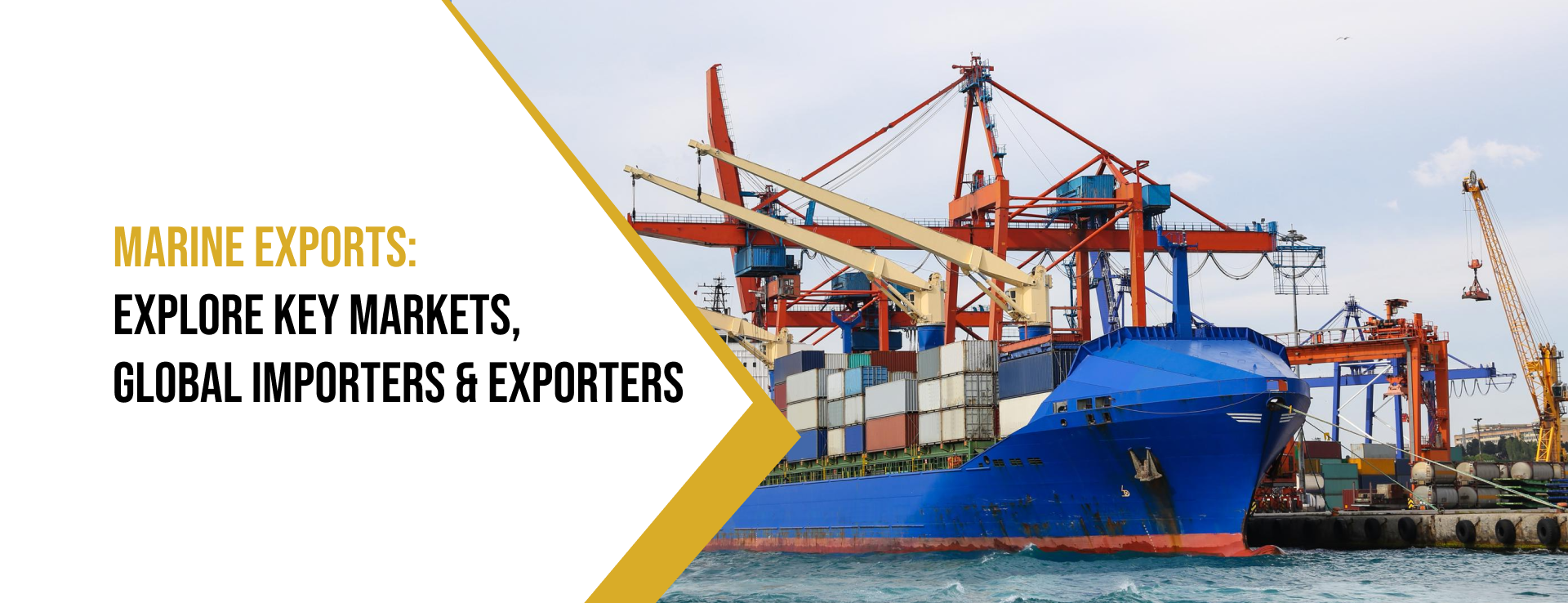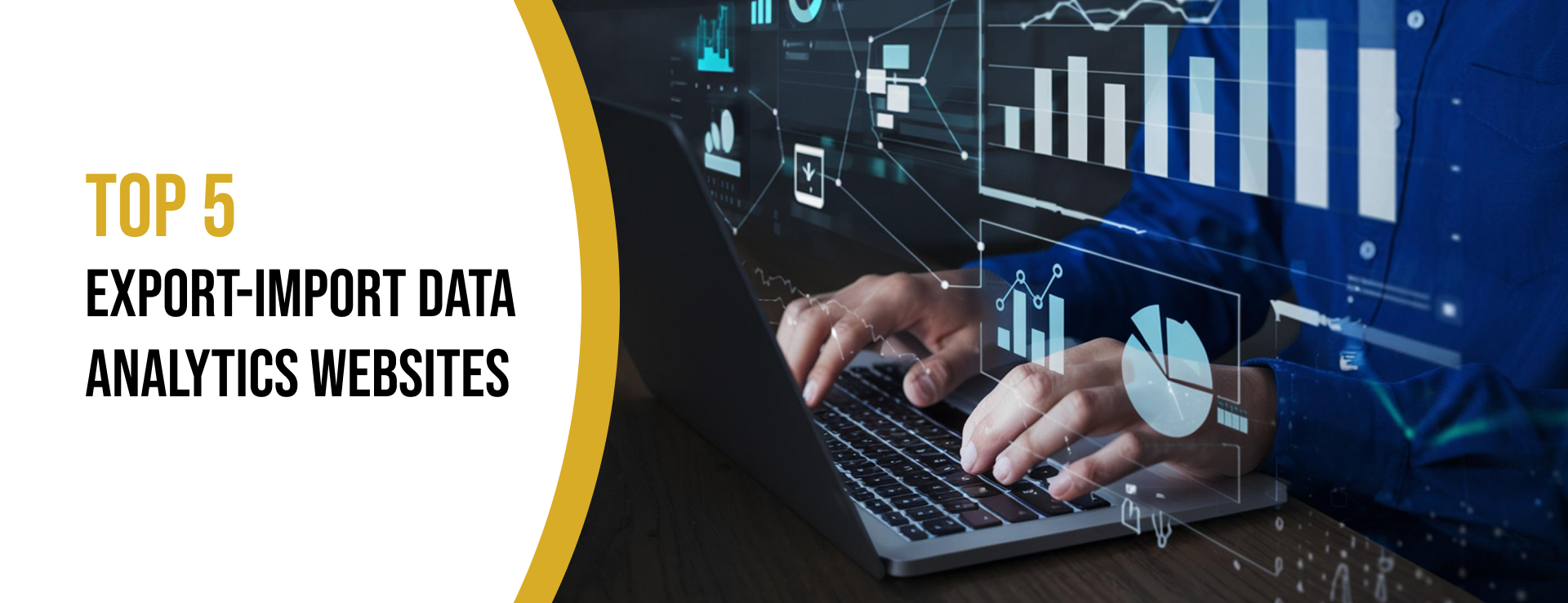Navigating Global Trade: The Top 5 Export Import Data Analytics Websites
Discover the top websites that help you find buyers, sellers & global shipments.
Ask any trade expert, and they’ll tell you: accurate trade data is the backbone of your export-import business. In today’s fast-paced world, where the international trade landscape is shaped by fluctuating tariffs, unexpected disruptions and market shifts, having the right intel isn’t just an advantage – it's survival of the fittest. That’s where export import data analytics platforms come into play, turning chaos into clarity. So, if you’re looking to navigate the choppy waters of foreign trade like a pro, here are the top 5 export import data analytics websites you need to check into.
Get Access To Import Export DataTop 5 Export-Import Data Analytics Websites
1. Ex-Im
Topping the list as one of the top export import data analytics platforms is Ex-Im. As the ultimate AI-powered superengine for foreign trade enthusiasts, this data analytics platform integrates the power of human intelligence and cutting-edge technology to connect you with active buyers and sellers across 181+ countries.
Plus, Ex-Im also helps you to understand your competitors to learn more about who they are, who they sell to, and who their most avid consumer is, apart from other important aspects.
One of the unique things about this particular data analytics platform is that, unlike other platforms, Ex-Im verifies buyers and sellers through human validation, ensuring accuracy and authenticity.
Pros:
Unmatched Data Accuracy
What’s the one thing that businesses often worry about? Are their partners 100% authentic, trustworthy and genuine? That’s exactly what Ex-Im does. The platform features data that is collected after going through every last extent of human verification to ensure you connect with the right partners at the right time at the right place.
User-Friendly Interface
Trade data platforms are often quite complex and overwhelming. Ex-Im breaks the ice with its intuitive interface, making searching for global trade data easier than counting 1, 2 and 3. In fact, users can find exactly what they need in a single click.
Best Value For Money
The best part about Ex-Im? It’s in its pricing. With affordable and flexible pricing plans, Ex-Im ensures you get high-quality trade intelligence right at your fingertips, irrespective of the size of your business. So, if you’re a large conglomerate or a start-up, Ex-Im gets your trade intel covered without breaking the bank.
Cons:
Hardly any! When it comes to ease of use, affordability and data accuracy, Ex-Im ticks all the boxes.
2. Panjiva
Another trusted name in the export import data analytics platforms is Panjiva. As a part of S&P Global Market Intelligence, this platform helps businesses with comprehensive global trade data to identify emerging opportunities, as well as monitor competitor activity.
Pros:
Extensive & Actionable Information
With its access to billions of shipment records across multiple countries, Panjiva helps businesses grow their market share, track trade flows and identify trends to make data-driven decisions.
Advanced Tech Intelligence
Trade data can be messy, but with Panjiva, businesses can identify unique company profiles through its AI algorithm.
Supply Chain Analysis
Not to mention, Panjiva enables businesses to gain macro-level insights to boost their supply chains’ visibility, in turn reducing delays & sustainability operations.
Cons:
Complex To Understand
While the platform is packed with several features, it can be quite overwhelming for first-time users. In fact, people might need a thorough training of the platform before they can leverage its full potential.
High Subscription Costs
Another point to be noted is that the platform delivers high-quality data, but at a premium price. While it may be suitable for large conglomerates, small and medium enterprises may find it quite heavy on the pocket when compared to other trade intelligence platforms.
Limited Coverage of Global Trade Data
Despite the platform’s vast database, its coverage is only restricted to fewer regions. In fact, the platform doesn’t have complete information on other countries besides the U.S.A., along with a few nations in Europe, China and Latin America.
3. Import Genius
When speaking about the top export import data analytics websites, it’s hard to miss Import Genius from the list. This trade intel platform helps importers and exporters from around the globe to track shipments and search global trade data, along with access to exclusive custom data from the world’s busiest trade corridors.
Pros:
Comprehensive U.S Import Data
One of the reasons why businesses love Import Genius is because of its extensive U.S. import shipment database. With over 8 million U.S. importers on the platform, global trade businesses can learn in-depth insights about who is importing what, from where and how much.
An Easy-To-Use Platform
What’s more is that Import Genius is quite easy to use and understand. All a person has to do is input a few keywords for a product or a country they’d like to search. That’s how easy it is.
Real-Time Country Data
Not to mention, the platform provides real-time shipment data sourced directly from the customs bureau for each country.
Cons:
Limited Export Data
While this particular export import data analytics platform is useful to know more about U.S. import data, its export data is quite limited and may not be suitable for businesses of all types.
Narrower Reach
In addition, the platform only provides a comprehensive overview for 17 countries, which is quite narrow considering there are numerous countries across the globe.
Basic & Incomplete Data
Last but not least, the platform provides very minimal and basic data that could easily be found through a search on the U.S. Customs pages.
4. Datamyne
In the world of global trade, having access to critical shipment data is the need of the hour, and Datamyne delivers just that. As one of the largest ‘searchable’ global trade databases, the platform covers 230 markets across 5 continents. What’s more is that as a part of the Descartes Systems Group, this particular trade platform helps clients find supply and demand for their products and enhance logistics, as well as tap into new markets.
Pros:
Detailed Trade Data
The platform has extensive coverage of global import export data and allows its clients to gain valuable insights into trade patterns.
User-Friendly Interface
To add to that, the platform is designed in a very ergonomic and intuitive way, making it easy for a layman to understand global trade data, all while looking aesthetic.
Plus, the platform enables its users to schedule automatic report deliveries so that they don’t have to do everything manually.
A Sound Customer Support Team
Sometimes, like in any other case, things might not go the way we expected. What elevates this trade data platform is its sound customer support. With their expertise and readiness, the team is always there to assist their clients so that they can leverage the power of global trade data to its maximum.
Cons:
Expensive
One of the negatives of this particular platform is its cost. In fact, the platform offers a premium price for its global subscription, which might not meet the needs and requirements for certain businesses, especially those which operate in the small-scale industry.
Not Up-To-Date Data
Another point to be noted is that the platform doesn’t offer real-time trade data. In other words, people have to wait for a minimum of a month to get access to the most up-to-date information.
Lack of Organized & Clean Data
Raw data wouldn’t make sense if it weren’t organised, and the same goes for the import-export data by Datamyne. In order to be useful and comparable, the platform needs to organise its shipment data.
5. TradeMo
Last but not least on the list of the top export import data analytics websites is Trade Mo. As a global supply chain intelligence company that integrates cutting-edge AI technology with trade data to transform it into actionable insights, Trade Mo sources information about global supply chains and diversification.
Pros:
Intuitive and User-Friendly Design
Clunky trade spreadsheets filled with mountains of data? Not anymore! Trade Mo’s export import data platform is beautifully designed, making understanding & analysing global trade data easy, even for beginners.
Clean, Organized Data
Raw global trade data is meaningless without it being organised. That’s exactly what Trade Mo does. It sorts through raw trade data and cleans it in a standard format for accurate and consistent consumption. Plus, by doing so, it ensures reliability so that you get all the information you need accurately.
Extensive Data Set
Not to mention, Trade Mo’s data is quite comprehensive and extensive. Through its platforms, people can drill down into shipment data, review custom dashboards, refine their search using a variety of filters, and get a glimpse of standardised company profiles.
Cons
Limited Contact Details
One area where Trade Mo needs to improve is its contact details. People using the platform have access to the contact details for a few companies, and not all. Plus, they’re unsure of whether or not this information is 100% genuine, which could make or break their business.
Minimal Filtration of Data
Another point to be noted is that while filtering global trade data through this platform, people can view 75,000 export shipments at the maximum. When they filter based on the HS code for a product, they can only select 5 at a time.
Limited Number of Companies
While the platform has an extensive list of companies and their data based in the U.S.A., it has a limited reach of other country-based companies, which may not help certain businesses, depending upon their needs and requirements.
The Final Verdict
All in all, in today’s ever-evolving landscape of global trade, having the right trade information is a necessity. In fact, a reliable, authentic export-import data analytics platform can either make or break your business. While there are many platforms out there, it’s essential for you to weigh out the pros and cons of each before deciding the right one for your business. In short, it’s about choosing wisely, because in imports and exports, the right data isn’t just power; it’s profit for your business.
Get Access To Import Export Data
Frequently Asked Questions (FAQs)
1. What does an export import data analytics platform do?
The main purpose of an export import data analytics platform is to connect you to the right people at the right time at the right place for your business. Plus, it helps you understand your logistics, shipping and supply chain, apart from giving you the resources you need to ship your goods beyond borders.
2. What are the factors to consider when choosing an export import data analytics platform?
When choosing the right export import data analytics platform, it's important to think about your business objectives, data coverage, user interface, pricing, and data quality, to name a few.
3. How do I find the best price for an export import data analytics platform?
To find the best price when picking an export import data analytics platform, it's good to compare different pricing models and consider your budget and needs for your business.
Recent Blogs

Marine Exports: Explore Key Markets, Global Importers & Exporters
Explore the global marine export market and companies operating in marine export Learn about MPEDAs registration and role in boosting marine export

How India Leads In Charcoal Exports: Top Exporters & Buyers In 2025
Explore the charcoal export market of India Discover the companies engaging in charcoal exports & coconut shell charcoal buyers market across the globe

India-Singapore Trade: Exporters, Importers & Key Products In 2025
Explore the India Singapore trade relations Learn about the top products in the exports from India to Singapore list Access recent trade data for businesses



